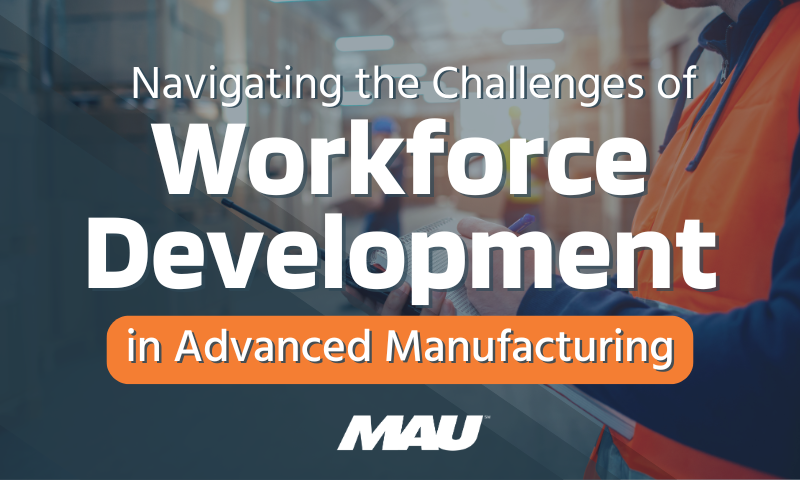With labor participation reaching historic lows in the last two years, employers are being forced to reexamine what attracts the modern worker.
Wages are still extremely important, hence the rapid rise of wages in the last six months; however, job seekers want more than just a paycheck; they want to feel valued and contribute to the world in a greater way. According to Forbes, workers are seeking “permanent workplace flexibility, a commitment to health and well-being, and working with a purpose.”
Despite this, employers continue to focus heavily on wages, and little else, causing fierce competition and instability.
What Could be More Important Than a Paycheck?
Nobody’s saying that wages aren’t important; most workers consider pay one of the most influential factors while job hunting.
However, there are multiple other perks a business can offer to attract new employees and retain current ones, like improved benefits, flexible hours, family support, a strong sense of purpose, and reskilling.
Improved Benefits
It’s no surprise that improved benefits are highly sought-after for job-seekers, but to some, it may be surprising that 80% of employees would choose additional benefits over a pay raise. Workers are becoming increasingly interested in jobs that offer flexibility and a healthy work-life balance rather than a hefty paycheck.
According to a survey conducted by Glassdoor, about 60% of people report that benefits and perks are major factors in considering whether to accept a job offer.
A majority of respondents reported that flexible hours, more work-from-home options, and unlimited vacation time could give a lower-paying job an edge over a high-paying job that offered fewer benefits.
Flexible Hours
Life happens fast, and modern job hunters are more focused than ever on finding jobs that work around their lives, not against them. An enormous 84% of working parents said flexibility is the number one most important factor in a job, with the work-life balance a close second at 80%.
Flexible hours and increased PTO are shown to reduce workplace stress, boost mental well-being and encourage productivity. Additionally, the Harvard Business Review states that “every year Americans leave $224 billion dollars in unused vacation time on the table,” which can be a huge expense for employers when employees leave the company.
Offering unlimited vacation time reduces costs for the employer and significantly improves applicant flow rate and retention. It also serves as a serious leg-up over higher-paying jobs with limited PTO.
There are several different ways companies can offer their employees flexibility, like telecommuting, unlimited PTO, and flextime.
All of these flexible work options empower employees by letting them arrange their work schedules in a way that accommodates their personal life.
Family Support
Family support is an extremely important factor to parents in the job market, particularly in the post-pandemic world. And yet, according to a report by The Council of Economic Advisers, the United States is the only developed country that does not offer paid parental leave. This makes it extremely important for companies in the private sector to provide those benefits.
Family support in the workplace can take many forms:
- Parental leave
- Flextime
- Onsite child care
- Offering backup child care for days when an employee’s regular child care provider is unavailable or school is closed.
- Defer the expense of child care by paying a portion of employees’ daycare fees at an off-site facility.
- Develop formal partnerships with daycare centers in their area, which in turn give top priority to employees’ children.
Family support is of particularly high value to female employees, one of the largest demographics to exit the workforce during the pandemic. Over 25% of women said they’d give parental leave heavy consideration when choosing a job, and a third of employees – including nearly 50 percent of working parents – have turned down a job because it conflicted with their family responsibilities.
Companies that are willing to offer family support can distinguish themselves from the pack and attract elusive working parents, particularly working mothers, back into the workforce.
Purposeful Work
Post-pandemic, we are more aware than ever of the world around us, which has spurred the desire for more purposeful work in many job hunters. Work that contributes to more than just the bottom dollar; work that influences the world around us and makes it a better place.
Workers are placing a high priority on joining a workforce that offers a sense of purpose. Job-seekers want to be more than just cogs; they want to grow and contribute meaningfully.
According to Mercer, workers are three times more likely to work for a company with a strong sense of purpose. However, only 13% of surveyed companies offer an “employee value proposition (EVP) differentiated by a purpose-driven mission”.
Adopting a growth mindset and presenting a “bigger picture” can attract the more driven, future-focused job seeker away from the competition.
Reskilling Potential
Job hunters want to know that there’s mobility within the company they’re applying for. Stagnation in a person’s career can be demoralizing and reduce workplace satisfaction. Roughly 74 percent of employees who haven’t received any reskilling or upskilling training would prefer to work for a company that provides learning opportunities. The same goes for job seekers.
Potential new and current employees are already seeking out new skills and learning opportunities, which gives employers the opportunity to invest in and retain talent, contribute to business growth, create a stronger workforce culture and attract talent from competitors who have not yet recognized the trend.
The modern worker is evolving, and increasing wages is no longer a sure-fire method to attract new talent. Employers need to take a step back and examine where employees’ priorities lie and how to capitalize on the opportunities they present.
For any business owner, the end goal should be an agile workforce built on flexibility and growth.

.png)


